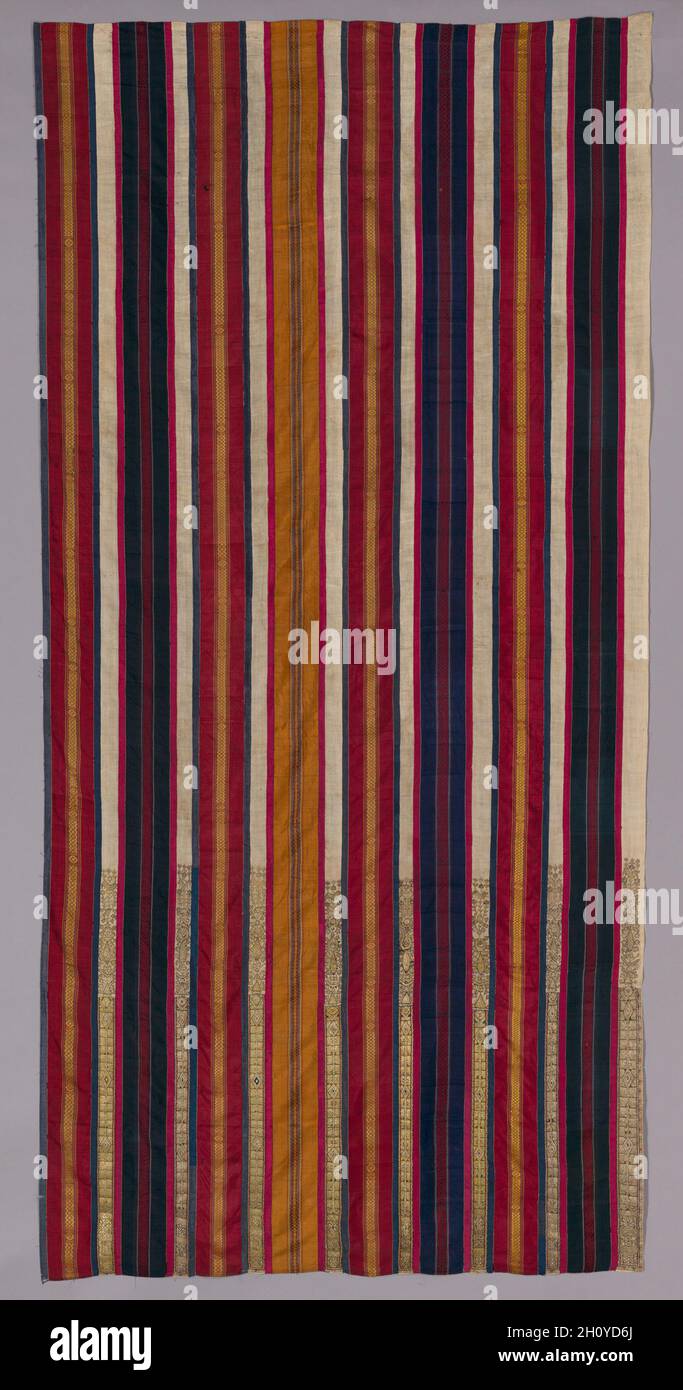Curtain, 1600s–1700s. Africa, North Africa, Tunisia, Djerba, Tunisian weaver(s) and embroiderer(s). Silk, linen, metal, and dye; overall: 276.8 x 136.7 cm (109 x 53 13/16 in.). One of a pair, this curtain displays colorful silk bands with woven geometric motifs, and cream bands with gold-embroidered plants, birds, six-pointed stars, and the khamsah (????), an open five-fingered hand. Birds and the tree of life were popular good luck or fertility symbols linked to marriage. This curtain’s cosmopolitan motifs would have resonated with Jews, Muslims, and Christians alike, reflecting its creation

Image details
Contributor:
CMA/BOT / Alamy Stock PhotoImage ID:
2H0YD6JFile size:
17.4 MB (873 KB Compressed download)Releases:
Model - no | Property - noDo I need a release?Dimensions:
1788 x 3400 px | 15.1 x 28.8 cm | 6 x 11.3 inches | 300dpiDate taken:
8 October 2015More information:
This image is a public domain image, which means either that copyright has expired in the image or the copyright holder has waived their copyright. Alamy charges you a fee for access to the high resolution copy of the image.
This image could have imperfections as it’s either historical or reportage.
Curtain, 1600s–1700s. Africa, North Africa, Tunisia, Djerba, Tunisian weaver(s) and embroiderer(s). Silk, linen, metal, and dye; overall: 276.8 x 136.7 cm (109 x 53 13/16 in.). One of a pair, this curtain displays colorful silk bands with woven geometric motifs, and cream bands with gold-embroidered plants, birds, six-pointed stars, and the khamsah (????), an open five-fingered hand. Birds and the tree of life were popular good luck or fertility symbols linked to marriage. This curtain’s cosmopolitan motifs would have resonated with Jews, Muslims, and Christians alike, reflecting its creation on multiethnic and multireligious Djerba, an island off the Tunisian coast. There, both goldsmithing and gold thread embroidery were done by Jewish artisans (male and female, respectively). The fine materials suggest this curtain once hung in a wealthy home or for special occasions; interior wall hangings were typically made from rough wool.